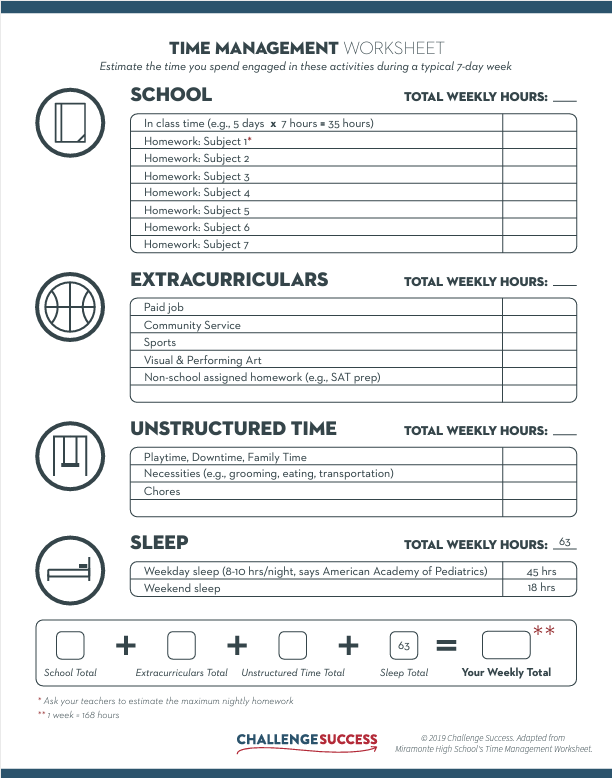Balancing the pressures of homework, extracurriculars, paid work, and family obligations can feel overwhelming. The Time Management Worksheet helps students consider how they will allocate their time for a particular semester/trimester/quarter with their well-being in mind. Students should estimate hours spent in a 7-day week across the following four categories:
School
The Time Management Worksheet works best when students know the homework load expectations for all of their classes. If this information is not already available to students, we recommend asking every department to complete the worksheet titled “Maximum Homework Estimates” . On it, departments can list all classes offered along with the maximum amount of nightly homework students can expect. Page 4 offers an example.
Extracurriculars
This section allows students to capture the structured activities they do outside of school such as sports, theatre, debate, paid work, community service, religious school, outside tutoring, etc. Students should not feel obligated to add an activity to every available line. Time management is just as much about choosing what not to do as it is prioritizing the activities students enjoy.
Unstructured Time
This section offers a place to list daily activities such as eating, grooming, and chores, as well as time spent outside of school in the following three categories: Playtime, Downtime, and Family Time. Learning how to build these restorative activities into time management habits will benefit students for their adult lives as well.
Sleep
According to experts, to lead healthy, balanced lives, high school students need 8-10 hours of sleep per night, and middle school students need 9-11 hours. We have pre-populated this worksheet with 9 hours per night. If a student’s schedule does not allow for the recommended amount of sleep on most nights, students should consider adjusting their daily or weekly commitments to prioritize sleep.

